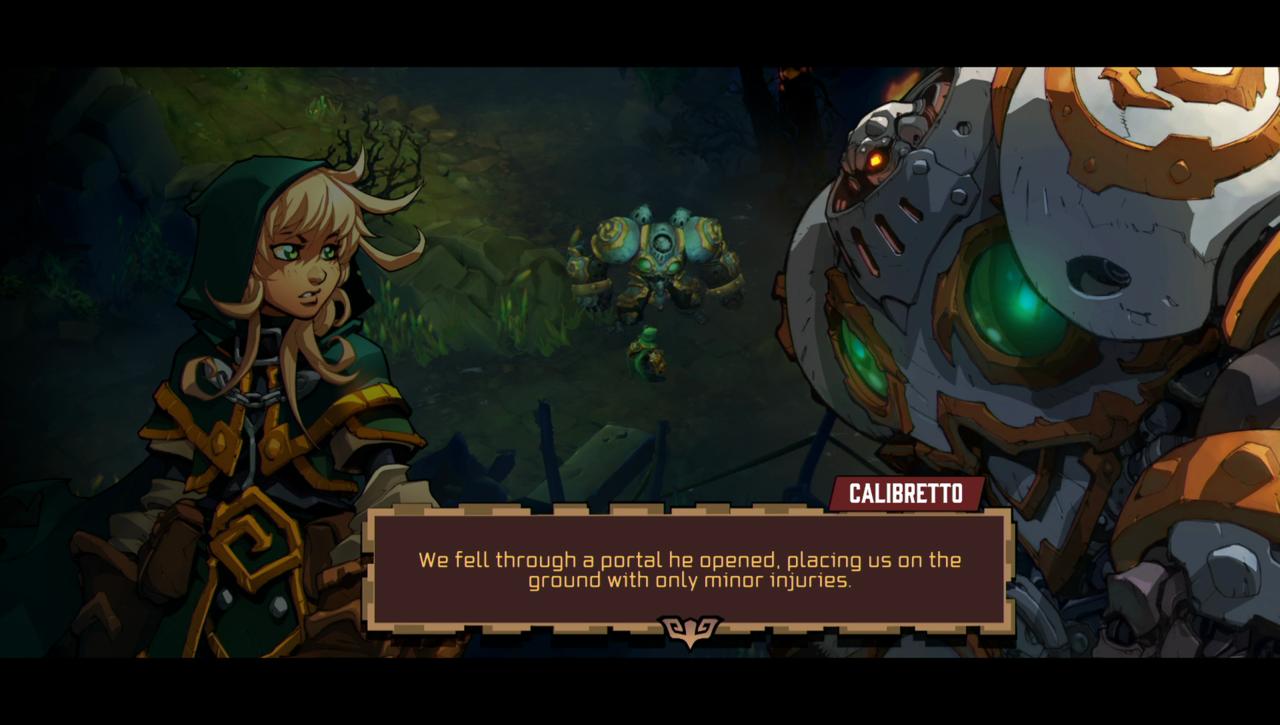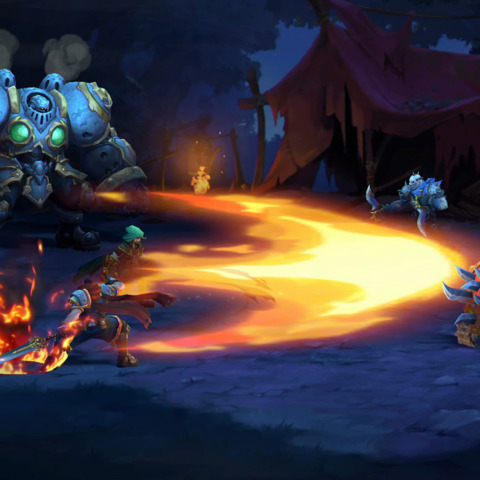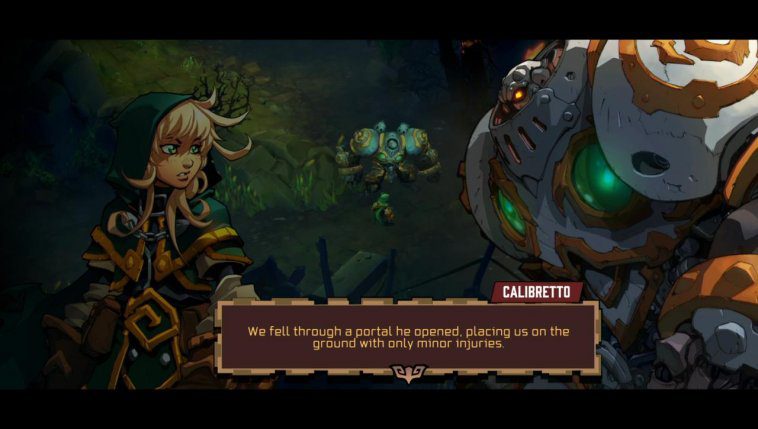Based on a hit comic book series from the late ’90s, Battle Chasers: Nightwar successfully translates the look and feel of a comic into a turn-based RPG. The mesmerizing animated intro shows exactly what you’re in for: a wild world where steampunk meets Dungeons & Dragons, rendered in beautiful, deep-shaded colors. It was a spell that was frequently broken when it first released. After months worth of patches, tweaks, and improvements on other platforms, however, it’s a very different, and much stronger experience right out of the box on the Nintendo Switch.
The broad premise of the Battle Chasers comic is that a girl named Gully has taken a pair of magic gauntlets, along with a motley crew consisting of a sellsword, a wizard, and a kindly robot, on a journey to find her missing father. The Nightwar chapter, however, is a minor sidetrack from that journey. The crew gets shot down from their airship over a mysterious island with serious problems of its own. Supposedly, the island is home to a mother lode of mana, which has prompted something of a magic-based gold rush. Mercenaries, thieves, unsavory merchants and, most worrisome of all, the attention of an evil sorceress named Destra, are drawn to the island. The crew’s plans to depart dissolve into a trek that goes deep into the island’s darkest regions.
Battle Chasers endears you in the process of establishing its world, characters, and combat systems. Garrison, the mercenary, is exactly what you might expect from a square-jawed warrior with a tragic backstory: his terse personality keeps him at arm’s length from his cohorts. On the flipside, the hulking mech, Calibretto, is a gentle soul who acts more as the defacto healer, and the beating heart of the story as it goes along. The cast at large brings infectious personality and energy to every scene, and all of this is underscored by a delightfully diverse soundtrack, flavoring typical medieval adventure anthems with everything from Chinese string instruments to bassy, trip-hop backbeats.
The game’s overworld is dotted with opportunities to battle oozing slimes, vicious wolf men, and surly prospectors. Dilapidated little shanty towns pop up along the way, as well as occasional side quests, which usually impart a bit of lore before asking your band to thwart a high-ranking enemy in a dangerous place. The bread and butter of the game, however, is its major dungeons. Eight in total, the dungeons are procedurally generated. Despite the randomization, each room and its layout is impressively detailed, with smoothly integrated puzzles, that most of the time it’s impossible to tell every dungeon wasn’t meticulously laid out until you reset one, and re-enter to find an unrecognizable location.
From the outset, combat is fairly standard turn-based fare. Veterans of the game will find that the difficulty curve has been evened out in a way where early battles are still very doable, but don’t go too easy on new players. The first few hours are full of hard hits and unexpected deaths for those who don’t stay vigilant. Basic enemies hit for dozens of points in damage in a single wave, leaving debuff effects like Poison and Bleeding in their wake before you even really know what they do.
Thankfully, it’s fairly easy to turn the tables. Every character has a special skill to affect enemies within dungeons–proactively stunning, ambushing, or igniting them–just before a fight kicks off. The principal gimmick during a fight is the Overcharge system. Basic attacks contribute to a special pool of red mana points that can be used to cast magic and tech attacks, rather than actual mana points. The new balance of progression makes it much easier to gain a foothold in the world, where no fight feels too unwieldy. For the fights that do, the removal of level restrictions on equipment also means that the right tool for the job is never too far out of reach. MP still remains in short supply as the game progresses, however. One should still be mindful about whether to build Overcharge or expend mana when using abilities. This gets increasingly tricky, but in a way that keeps you engaged in every battle, no matter how small.











There were two major problems with Battle Chasers when it first released: A severely steep difficulty curve as the game progressed into its second and third acts, and frequent, aggravating load times going into both battles and new areas. The bad news is that the second issue remains. Even on the more powerful PS4, months of patches still leave a problem where even just getting into a fight in the overworld map can stop the game dead for 30 seconds to load a single, low-level enemy. At least that system gets 60fps fights as a consolation prize. The Switch gets no such benefit, with not just a lower resolution, but intermittent stutters in framerate the more active and flashy the attacks. On both systems, going from the overworld to a dungeon or vice versa can keep you trapped on a loading screen for close to a minute.
The good news is that everything else feels great. Changes to the game’s XP and various store economies make it easier to keep your companions ahead of the curve through regular gameplay instead of through tedious grinding—though that’s still an option if you want it to be, and the rewards are now much more worthy of the effort. The same considerations still have to be made with each new piece of gear. Armor typically raises a character’s HP, stamina, and speed, but drastically lowers physical and magical defense–stats that matter against stronger enemies. The trick of it is finding items that counterbalance the loss, and the odds of that happening, as it stands, have been improved for the better.
Beyond the challenge of combat, Battle Chasers is sustained through the strength of its story, a rollicking tale that takes our heroes literally to hell and back. It’s bolstered by some sharp dialogue, gorgeous artwork, and an ensemble that plays extremely well off of each other. Lots of work has gone into Nightwar since its first release, and the balancing improvements make it an easy game to recommend on all platforms.
Website: LINK


